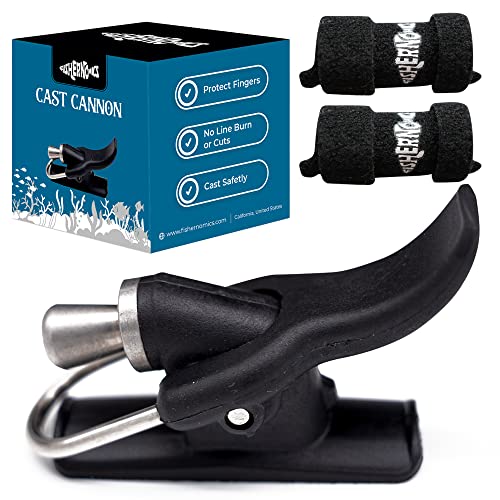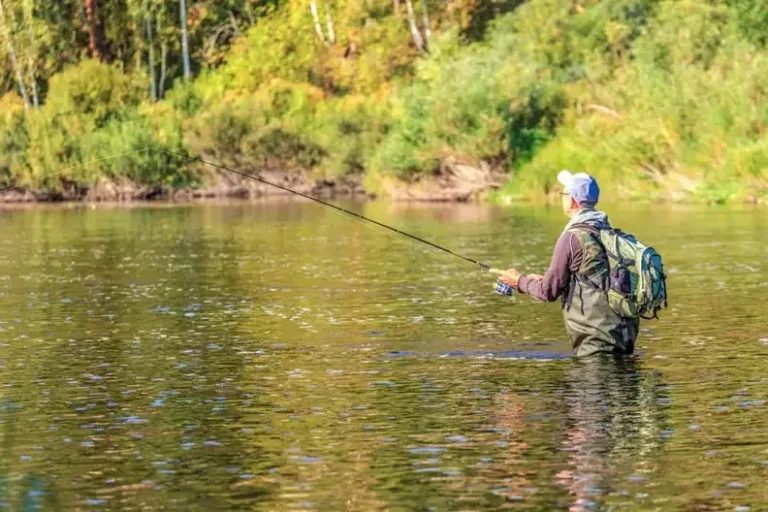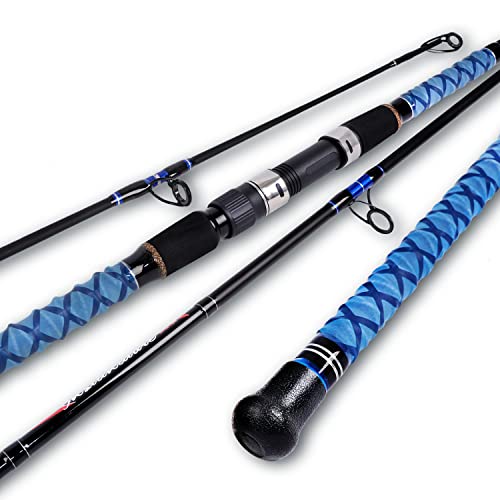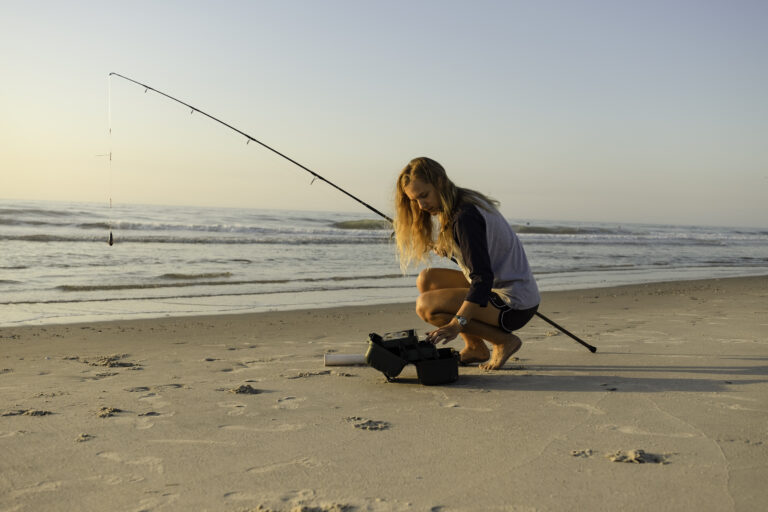The tide does matter when surf fishing as it influences the movement and behavior of fish. When fishing in the surf, understanding the tide can greatly improve your chances of success.
The tidal currents carry food and baitfish, creating an optimal feeding environment for predatory fish. During high tide, fish tend to move closer to shore, allowing for easier access from the beach. Conversely, during low tide, fish may move farther offshore or seek deeper waters.
Additionally, certain species of fish are more active during specific tide phases. By aligning your fishing efforts with the movement of the tide, you can increase your chances of attracting and catching fish. So, being mindful of the tide is crucial for successful surf fishing.
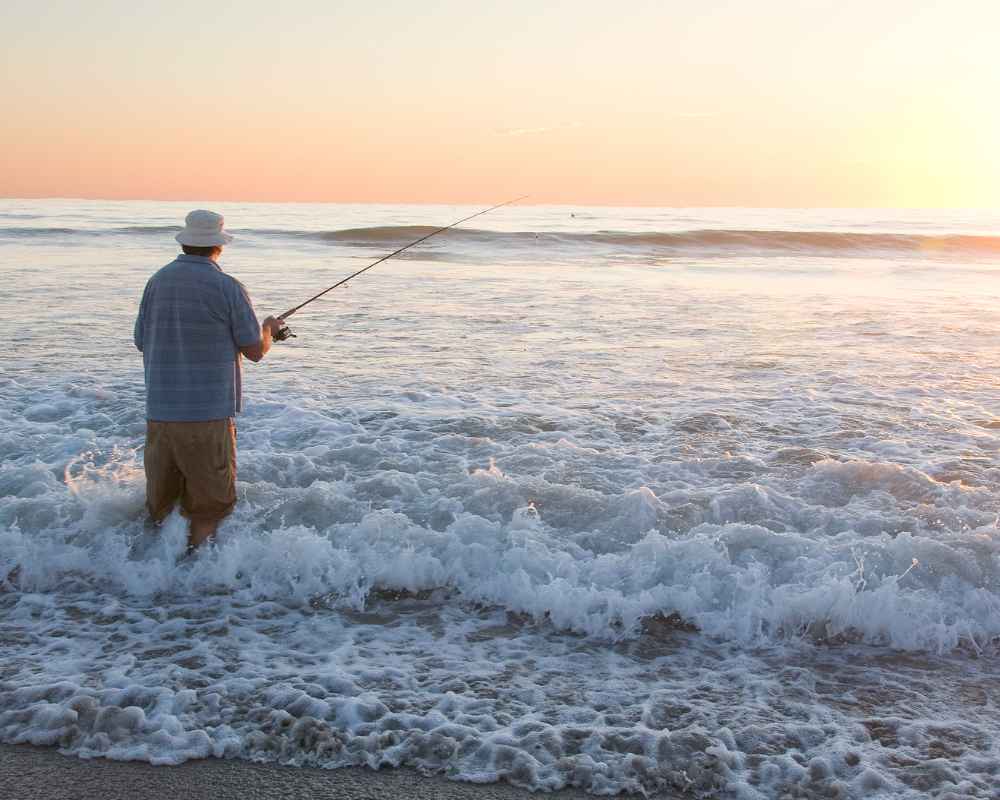
Credit: activeatthebeach.com
Understanding The Role Of Tide In Surf Fishing
The Influence Of Tide On Fish Behavior
Tide plays a crucial role in surf fishing as it significantly affects fish behavior. Understanding how tides impact fish can greatly enhance your chances of a successful fishing trip. Here are some key points to consider:
- Fish movement: Tides have a direct impact on fish movement along the shoreline. During high tide, fish tend to swim closer to the shore, searching for food that gets swept in by the current. On the other hand, during low tide, fish may move farther offshore or seek shelter in deeper waters.
- Feeding patterns: Fish are more active during certain tide cycles. As the tide changes, it triggers the movement of small baitfish and other food sources. This, in turn, attracts larger predatory fish. Timing your fishing session with the peak feeding periods can significantly increase your chances of hooking a catch.
- Spawning behavior: Tides also influence fish spawning behavior. Some species prefer to spawn during specific tidal stages, such as high or low tide. Understanding the spawning preferences of your target species can help you plan your fishing trips accordingly.
- Water clarity: Tide movements affect water clarity, which can impact fish behavior. During high tide, the water tends to be murkier due to increased sediment and debris being stirred up. On the other hand, low tide often brings clearer water conditions. Keep this in mind while selecting bait and lures for optimal visibility.
How Tides Impact Bait Movement And Availability
Tides not only affect fish behavior but also have a profound impact on bait movement and availability. Here are some key points to consider:
- Currents and bait movement: Tidal currents play a significant role in baitfish movement. During incoming tides, currents push baitfish and other natural bait closer to the shore, attracting predatory fish. Conversely, outgoing tides carry baitfish away from the shore, potentially reducing the availability of food for larger fish.
- Concentration of bait: Tides can cause baitfish to congregate in specific areas, creating feeding hotspots for larger fish. Understanding where the tide pushes baitfish can help you identify these productive zones. Deep holes, sandbars, and rip currents are often prime locations to target when the tide is moving.
- Bait accessibility: Depending on the tide, certain bait options may become more accessible. During high tide, fish have easier access to baitfish and crustaceans hiding in the beach or near structures like rocks and jetties. However, low tide exposes different feeding opportunities, such as sand fleas, clams, and crabs in exposed sandy areas.
- Presentation techniques: The movement of bait by tidal currents requires adjustments in presentation techniques. During high tide, heavier sinkers or casting farther offshore may be necessary to reach fish. In contrast, during low tide, lighter tackle and targeting closer to the shoreline can yield better results.
Remember, while tide greatly influences fish behavior and bait movement, other factors like weather, seasons, and the specific location you are fishing in should also be considered. By understanding the role of tide in surf fishing and adapting your approach accordingly, you can increase your chances of a rewarding fishing experience.
Optimal Tide Conditions For Surf Fishing
Surf fishing is not just about picking the right bait or casting technique; tide conditions play a crucial role as well. Understanding the relationship between tide and fish behavior can greatly enhance your success on the shoreline. In this section, we will explore the best tide conditions for surf fishing and how they can affect your catch.
High Tide Vs. Low Tide: Which Is Better?
- Fishing during high tide:
- Benefits:
- Increased water depth provides easy access to deeper channels where fish often feed.
- Fish may move closer to shore in search of prey that gets stirred up by the waves.
- Better chances of catching larger species like striped bass, redfish, and snook.
- Considerations:
- Strong current and rough surf can make casting and retrieving more challenging.
- Limited beach area due to rising water levels may restrict maneuverability.
- Fishing during low tide:
- Benefits:
- More exposed beach area allows for easier casting and mobility.
- Calmer waters make it easier to detect subtle bites and feel the fish’s movement.
- Prime time to target species that search for food in shallow areas, such as flounder and pompano.
- Considerations:
- Shallow water means less access to deep channels where some larger fish tend to congregate.
- Fish may be more cautious due to increased visibility and potential predators.
Best Tide Stages For Various Fish Species
Every fish species displays different preferences when it comes to tide conditions. Knowing their behavior can help you plan your surf fishing trips more effectively. Here are some examples:
- Striped bass:
- Incoming tide (just before high tide) is often the most productive.
- They move closer to the shore to feed on baitfish being pulled in by the current.
- Redfish:
- Incoming and outgoing tides can both lead to successful catches.
- Look for them in the shallows during high tide and near drop-offs during low tide.
- Pompano:
- Outgoing tide, especially during the last few hours, is ideal.
- They scavenge the surf zone for sand fleas and other small crustaceans.
- Flounder:
- Falling tide, including the period after high tide, is usually preferred.
- They gather near structures, waiting to ambush prey brought in by the receding water.
Factors To Consider When Selecting Tide Conditions
Choosing the right tide conditions requires a thoughtful approach. Here are some factors to consider before heading out for surf fishing:
- Species behavior:
- Research the preferred tide stages of your target species for optimal chances of success.
- Moon phase:
- Full and new moons create more extreme tidal movements, which can result in better fishing.
- Weather conditions:
- Wind direction and intensity can impact wave height and tidal movement, directly affecting fishing conditions.
- Local knowledge:
- Talk to experienced surf fishermen or consult local fishing reports for insights into the best tide conditions in your area.
Remember, tide conditions are just one piece of the puzzle. Other fishing factors like bait selection, casting technique, and fishing regulations also play important roles. By understanding the optimal tide conditions for surf fishing and adapting your strategies accordingly, you can increase your chances of reeling in that trophy catch.
So, check the tide charts, grab your gear, and hit the surf for an exciting day of fishing!
Fishing Techniques To Maximize Tide Effects
Surf fishing is not just a leisure activity but a true passion for many anglers. When it comes to maximizing your chances of success, understanding the impact of tide on surf fishing can make a significant difference. In this section, we will explore fishing techniques to help you make the most of the tide effects.
Whether you are planning to fish during an incoming tide or target fish during an outgoing tide, adjusting your approach based on tide-related variables can greatly enhance your fishing experience. Let’s dive in and explore these strategies further.
Surf Fishing Strategies For Incoming Tides
During an incoming tide, fish tend to move closer to the shore in search of food that is carried by the rising water. To take advantage of this favorable condition, consider the following techniques:
- Position yourself strategically: Identify areas such as sandbars, jetties, or gutters that fish may use as feeding grounds during incoming tides.
- Use live bait: Take advantage of the increased activity and visibility of fish during an incoming tide by using live bait. Species like shrimp, sand fleas, or small crabs are popular choices.
- Cast parallel to the shoreline: Casting your line parallel to the shore allows you to cover more ground and increase your chances of encountering feeding fish.
- Vary your retrieve speed: Experiment with different retrieve speeds to mimic the movement of prey being swept towards the shore by the incoming tide.
- Monitor the water movement: Keep an eye on the direction and strength of the current. Paying attention to the subtleties of water movement can help you identify feeding zones and adjust your approach accordingly.
Tips For Targeting Fish During Outgoing Tides
An outgoing tide is an excellent opportunity to catch fish as they venture out to deeper water, following the receding waves. Consider the following tips for successful surf fishing during this phase:
- Locate drop-offs: Look for areas where the water suddenly becomes deeper, such as sandbars or troughs. Fish often congregate around these drop-offs as they wait for prey to be carried away by the outgoing tide.
- Choose the right lures: Select lures that imitate injured or struggling baitfish. Examples include spoons, soft plastics, or topwater lures. The movement of these lures can attract fish that are actively feeding during the outgoing tide.
- Time your casts: As the tide goes out, fish may move swiftly towards deeper waters. Be mindful of the timing and cast towards the areas where fish are likely to congregate before they disappear.
- Experiment with different depths: Since the water is gradually receding during an outgoing tide, try varying your casting distance to target different depths. This can help you identify at which depth the fish are feeding most actively.
- Pay attention to structure: Outgoing tides can reveal submerged structure, such as rocks, reefs, or submerged vegetation. These areas attract fish seeking shelter or ambush points. Targeting these structures can increase your chances of success.
Adjusting Your Approach Based On Tide-Related Variables
Understanding tide-related variables and adjusting your strategy accordingly is crucial for maximizing your surf fishing experience. Consider the following factors when planning your fishing trips:
- Moon phase: The moon’s gravitational pull influences the tides. Certain moon phases, like the full and new moon, can lead to stronger tides, which may affect fish behavior.
- Tide height: Consider fishing during times of higher tide, as this increases the chance of fish moving closer to the shoreline and feeding grounds.
- Weather conditions: Weather patterns, such as wind direction and speed, can impact the tide’s impact on fish movements. On windy days, look for areas sheltered from the wind to find feeding fish.
- Local knowledge: Consult local tide charts and speak with experienced anglers in the area. They can provide valuable insights into the best times and locations for surf fishing based on tidal patterns specific to your location.
By implementing these fishing techniques and considering tide-related variables, you can enhance your chances of success when surf fishing. Take advantage of the varying tides and adapt your approach to maximize the effects and unlock the potential of your next surf fishing adventure.
Happy fishing!
Conclusion
Understanding the relationship between tide and surf fishing can significantly improve your chances of success. The tide greatly influences fish behavior, affecting their feeding patterns and habitat preferences. Learning to identify the best tide phases for different species of fish can help you strategize your outings and maximize your catch.
For example, high tides can push fish closer to the shoreline, while low tides may reveal productive fishing spots that are otherwise concealed. By considering factors such as tide height, current, and time of day, you can make informed decisions about when and where to cast your line.
It’s also worth noting that even during less favorable tide conditions, fishing can still be enjoyable and rewarding. By adapting your techniques and exploring different areas, you can always find opportunities to land a big catch. So, next time you head out for a surf fishing adventure, be sure to take the tide into account and set yourself up for a successful outing.

